"Sniffles and Scribbles"






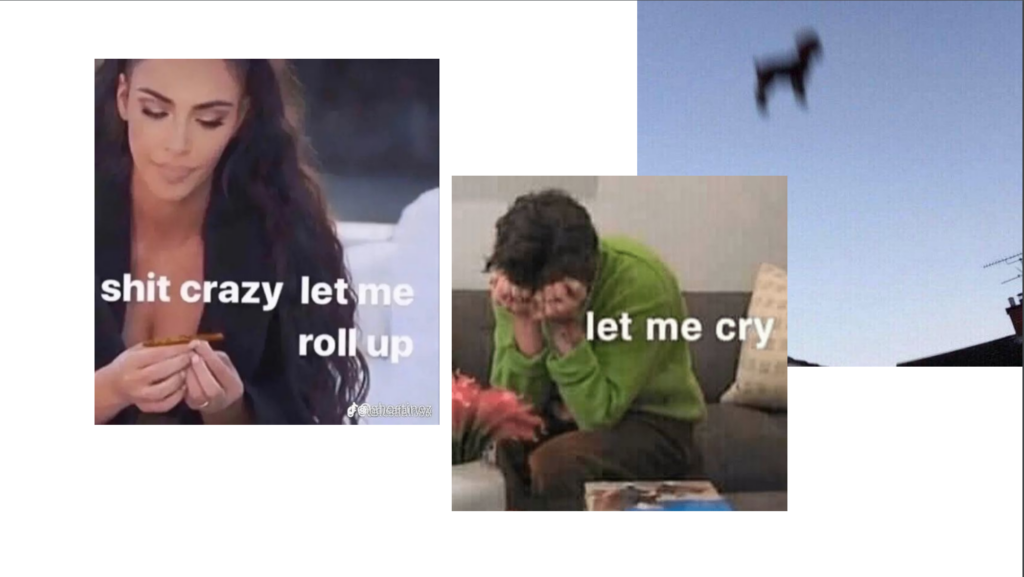
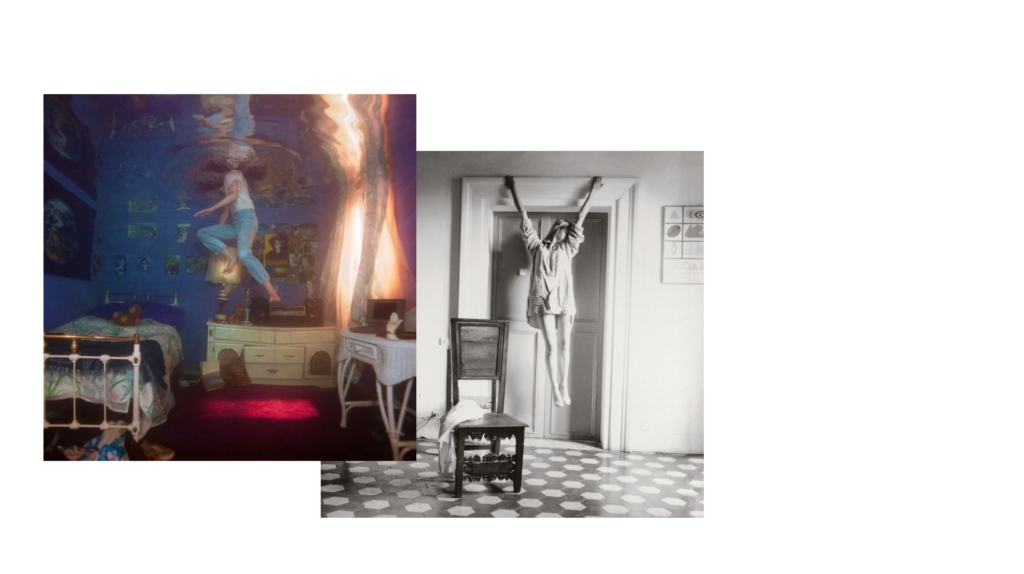



"Sniffles and Scribbles"











Merkwürdig – ich habe mich dafür entschieden, die Menschen meiner Befragung als “Existing Crying Material” zu benennen.
Aus meiner Beschäftigung mit der Materie des Weinens sowie mit einigen Wörtern, die vorwiegend mit dieser Aktion in Zusammenhang gebracht werden oder als gedankliche Überschriften für Ausführungen zur Funktion der Tränen dienen könnten, erschlossen sich in mir mehr und mehr die Vorteile meines Weinens. Gleichzeitig bewegte ich mich dahingehend in eine Verwunderung über die, die es nicht tun. Während und schon vor meiner Ausarbeitung fielen mir zu jedem meiner gewählten Begriffe vereinzelte Fragen ein, deren ich, wie ich nahe dem Wasser gebaut bin, nicht fähig war, zu beantworten. Meine Neugierde ließ mich jedoch in der Folgezeit aufhorchen und ich musste mich bei Freunden und Bekannten von mir nach dem Vorkommen ihrer Tränen erkundigen. Es ergab sich ein unerwarteter Kreis an Menschen, die sich das Heulen offenbar abgewöhnt haben – von ein Mal im Jahr bis hin zur Dauerhaftigkeit, dass eine Erinnerung an das letzte Mal verkommen ist. Meinem Entschluss, Antworten zu wollen, folgte etwas unsicher und spontan die erste Interview-Situation. Ich hatte offenbar nicht in Betracht gezogen, dass unser Gespräch über das Thema ein Ausdruck von Leid, eine Nachricht von Hilflosigkeit, eine Reaktion der Hingabe, ein Gesicht frei-gelassener Stimmung, sprich Weinen, eventuell Emotionalität mit sich führt und meine Vorstellung eines bequemen Dialogs wurde nicht erfüllt. Als Ersatz erhielt ich aber Ehrlichkeit und den Hinweis darauf, dass Gesprächsbedarf besteht. Besser vorbereitet und motiviert durch die Intensität der ersten Aussprache, konnte ich bis heute von vier weiteren Personen Eindrücke sammeln und werde sie hiermit schriftlich wiedergeben. Alle Interviews begannen mit einer kurzen Aufklärung über meine Intention, danach wurden die Fragen in gleicher Art und Reihenfolge gestellt.
T. (he/him 26) F.(he/him, 23) L.(she/her, 22) P.(he/him, 30) M.(he/him, 39)
Frage 1 Wann hast du das letzte Mal geweint?
T: Daran kann ich mich nicht erinnern, aber das muss schon zwei, drei Jahre her sein.
F: Ich kann mich nicht genau daran erinnern, wann ich das letzte Mal richtig geweint habe. Das letzte Mal, von dem ich noch weiß, ist so ca. 2015 gewesen, vielleicht habe ich aber dazwischen etwas verdrängt.
L: Meine Erinnerung ist schlecht, aber ich glaube Ende Oktober/Anfang November war das.
P: Ich kann mich nicht erinnern – so 2014/2015 in etwa.
M: Vor ungefähr einem halben Jahr habe ich ein wenig geweint, “richtig” geweint habe ich zuletzt 2018.
Frage 2 Wie intensiv ist dein Schmerzempfinden? (körperlich/seelisch)
T: Körperlich bin ich kein sensibler Mensch, seelisch schon sehr, ich bekomme meine Grenzen aber nicht wirklich mit, das ist mehr wie träumen.
F: Körperlich ist mein Empfinden vermutlich ganz normal, seelisch ist es kaum zu spüren.
L: Körperlich und seelisch bin ich zwar sehr empathisch, aber ich denke, ich kann gut mit Schmerz umgehen und/oder lasse ihn nur sehr schwer zu.
P: Mein eigenes Schmerzempfinden ist ja subjektiv. Ich finde es schwer, die Intensität da festzustellen. Körperlich bin ich nicht so empfindlich. Seelisch quäle ich mich schon oft.
M: Mein körperliches Schmerzempfinden ist eher wenig intensiv, da ich meinen Körper sehr viel in Situationen bringe, in denen Verletzungen vorprogrammiert sind. Ich denke, ich habe gelernt, durchzuatmen und akuten Schmerzen innerlich keinen selbst-verstärkenden Resonanzraum zu geben. Mein seelisches Schmerzempfinden schwankt zwischen hochsensibel und abgebrüht. Generell bin ich sehr verletzt und verletzbar und habe mir deswegen jede Menge Methoden und Werkzeuge zur Prävention angeeignet.
Frage 2a Wann ist der Schmerz für sich „zu groß“, nicht mehr ertragbar?
T: Wenn ich mir selber Schmerzen zufüge, höre ich dann auf, wenn ich nicht mehr kann. Irgendwann fällt mir auf, dass etwas nicht stimmt und ich verlasse die schmerzhafte Situation oder versuche, einfach zu fliehen.
F: Ich kann keine Situationen mehr beschreiben, die nicht ertragbar sind. Ich könnte mir vorstellen, mein seelisches Schmerzempfinden schon vor längerer Zeit überschritten zu haben und um dem ganzen Leid nicht ausgesetzt zu sein, schottet sich mein Bewusstsein von Emotionen ab, bei Trauer sowie Freude.
P: Da ich noch am Leben bin, hab ich „zu groß“ wohl noch nicht gehabt.
M: Wenn Schmerzen keine Zeit und keinen Raum haben, abzuheilen und dann weitere Verletzungen dazukommen.
Frage 3 Glaubst du, dass Tränen eine Katharsis begleiten? Oder Auslösen? Katharsis = Läuterung, Klärung, Aufbereitung, Heilung, Reinigung
T: Ich glaube schon, dass das Weinen ein gesünderes Bild auf meine Schmerzen geben würde, wenn ich es könnte. Ob es ein begleitender oder auslösender Effekt ist, spielt dabei keine Rolle.
F: In gewisser Weise. Ich glaube es ist wichtig, Gefühle zulassen zu können und sie mit sich selbst und anderen zu kommunizieren. Weinen ist für mich ein Ausdrücken von Emotionen (gute und schlechte). Es kann einem selber emotionale Themen zeigen, in Beziehung zu anderen bei der Kommunikation helfen und es verschafft die Möglichkeit, sich selbst sehr ehrlich zu begegnen. Da gibt noch sehr viel mehr, aber das kann ich nicht alles auffassen.
L: Ich fühle mich, auch wenn ich selten weine, oft sehr befreit danach. Aber ich glaube, es gibt auch genug Wege abgesehen vom Weinen mit Emotionen umzugehen oder Schmerz zu lösen.
P: Ich denke schon, dass das miteinander zu tun hat.
M: Ich denke, es ist wichtig, sich auch mal seinem Kummer voll und ganz hinzugeben. Dabei meine ich nicht Dramatisieren, sondern in einem geschützten Umfeld Schmerz und Trauer zu erleben. Da gehören Tränen dazu, ja. Richtig weinen ist wichtig und nichts schlimmes, sondern ein Zeichen für einen sehr gesunden Prozess. Daher: Auslösen Nein – Begleiten definitiv.
Frage 3a Wann schätzt du dich als „geläutert“ ein?
T: Wenn ich beschäftigt bin, wenn mich Aktionen umgeben, vor allem draußen in der Natur. Ich könnte bestimmt auch besser weinen in der Natur.
F: Wenn ich wieder Gefühle zulassen kann. Ich denke, mal wieder richtig zu weinen und dem eingesperrten Schmerz die Tür zu öffnen, wäre ein guter Schritt
L: Ich kann, ehrlich gesagt, nur schwer etwas mit dem Begriff anfangen, weil er irgendwo sehr esoterisch wirkt. Aber losgelöst/ befreit von Emotionen fühle ich mich, wenn ich diese mit engen Freunden teile, oft auch mit sehr vielen Personen, die mir nahe sind, denn bei einer Person reicht das oft nicht aus.
P: Das ist mir ein zu religiöser Begriff. Ich schätze mich nie so ein.
M: Das lässt sich direkt an meinen Konsummustern ablesen. Wenn der Punkt gekommen ist, dass ich keine Substanzen mehr nehme, dann ist das wahrscheinlich auch der Zeitpunkt, wo ich mich innerlich im Gleichgewicht befinde.
Frage 4 Fehlt dir ein Drang oder der Wunsch nach Besserung? Hoffst du viel?
T: Ich habe schon häufig sehr unrealistische Wünsche, aber ich hoffe nicht viel auf Besserung, ich habe allgemein nicht viel Hoffnung. Aber mein Streben nach Gesundheit, nach Klar-sein, Nüchtern-sein – das ist dringlich und dagegen anzukämpfen ist sehr schwierig, vielleicht weil ich weiß, das es nicht so ist.
F: Der Wunsch nach Besserung fehlt nicht. Ich bin davon überzeugt, dass ich das Leben irgendwann wahrnehmen kann, wie ich es mir wünsche, bzw. bin ich mir sicher, dass es möglich ist, Veränderung zu schaffen. Der Drang ist nur noch nicht groß genug und ich brauche sehr viel Kraft, mich auf einem momentan akzeptablen Level zu halten.
L: Ich bin echt zufrieden mit meinem Leben und meine das auch ehrlich. Klar hoffe ich auf Dinge, aber nicht übertrieben und meisten passieren auch mehr Dinge zufällig, auf die ich nicht hoffe, aber sehr unerwartet schön sind.
P: Der Drang oder Wunsch nach Besserung fehlt mir definitiv, ich hoffe auch nicht sehr viel – was aber vielleicht auch nicht nur schlecht ist.
M: Nein, mir fehlt kein Drang nach Besserung. Gleichwohl ist mein Handeln sehr davon geprägt, dass ich Dinge sehr durchdenke und von den Folgen und Konsequenzen her betrachte. Hoffen macht immer nur dann Sinn, wenn es keinen Plan mehr gibt.
Frage 4a Wie fühlst du dich mit deiner jetzigen Situation/ deinem Stand im Leben?
T: Da ist eine Art Einsamkeit, wie verlassen von einem Ich, das etwas anders gemacht hätte.
F: Ich fühle mich gerade so wohl genug. Ich habe Angst, etwas an meiner Situation zu ändern und „Besserung“ zu schaffen, weil ich mich dann unbekannten Dingen ausliefere, die meinen etwas fragilen Zustand kaputt machen könnten.
L: Ich denke, dass sich diese Frage mit meiner vorherigen Antwort auch beantwortet hat.
P: Blicke eher auf eine wilde Zeit zurück und kann mich darüber auch sehr freuen. Ich habe mich aber auch damals schon nicht gut dabei gefühlt. Retrospektiv werde ich die jetzige Situation bestimmt als mehrheitlich positiv sehen. Gerade, im Moment ist alles recht grau.
M: Ich bin sehr unzufrieden, aber das ist okay, denn vieles hat sich schon gebessert und ich arbeite viel an mir und meiner Idee, wie es weitergehen soll und wo ich hin möchte. Manchmal bin ich zufrieden damit, wie sich die Dinge entwickeln und wachsen
Frage 5 Was hältst du von Teilnahmslosigkeit?
T: Teilnahmslosigkeit ist ein Schutzmechanismus und nicht zwangsläufig schlecht, vielleicht aber erlogen. Weinen macht auf jeden Fall ehrlicher.
F: Naja – nicht so cool. Ich kenne Teilnahmslosigkeit eher als anhaltender Zustand. Eine Gleichgültigkeit für fast alles, welche einem ziemlich Angst machen kann. Es ist vermutlich ein Schutz-Mechanismus, um seelischen Schmerz nicht zuzulassen. Es tut dem Selbstwert aber nicht gerade gut. sich als apathisch, kalt und desinteressiert wahrzunehmen. Es fühlt sich so an, als würde man sich selbst und anderen beim Leben zuschauen ohne, Einfluss nehmen zu können.
L: Kommt darauf an, in welchem Bezug. Den Zustand kenne ich in bestimmten Situationen, wenn der Kopf sich plötzlich von dem Äußeren trennt und ein Gefühl der Entfremdung eintritt. Eine dauerhafte Teilnahmslosigkeit ist natürlich echt beschissen und mir tut es leid, wenn Menschen so fühlen. Im aktiven Sinn (zB. politisch) hat man aber immer eine Entscheidungskraft. Teilnahmslos zu sein ist in diesem Sinne auch eine Entscheidung.
P: Das bin ich hin und wieder und finde das verständlich, aber habe da keinen emotionalen Bezug zu, glaub ich.
M: Ich halte Teilnahmslosigkeit für gleichermaßen negativ als auch nachvollziehbar. Ich bin sehr gerne neugierig und entdecke wirklich gerne neue Dinge, Teilnahmslosigkeit bedeutet für mich das genaue Gegenteil.
Frage 5a Was ist für dich wahrscheinlicher? Du weinst, um deine Empfindungen und dein Bewusstsein völlig für die Situation zu öffnen. Oder Du weinst, um dich vorerst abzulenken, deine Wahrnehmung der Ereignisse durch den innerlichen Vorgang des Weinens einzuschränken?
T: Ich glaube, ich würde eher aus einer Überforderung heraus weinen und damit versuchen, mich abzuwenden.
F: Du weinst, um deine Empfindungen und dein Bewusstsein völlig für die Situation zu öffnen.
L: Absolut Variante 1!
P: Zweiteres eher.
M: Definitv A
Frage 6 Hast du Weinen schon einmal als unsittlich empfunden? Wann?
T: Nein, Weinen ist nie unsittlich, es gibt in jeder Situation genug Gründe zu weinen.
F: Früher ja, mittlerweile nein.
L: Mittlerweile nicht, aber als Kind wurde mir oft gesagt, ich dürfe nicht weinen, ich denke, deswegen kann ich auch heutzutage nur sehr sehr selten weinen.
P: Ich bin als Junge in den 90ern sozialisiert worden – dass Weinen unsittlich ist, wurde mir wohl anerzogen. Ich weiß zwar, dass das rationaler Unsinn ist, aber empfinden werde ich es trotzdem oft noch.
M: Weinen ist für mich dann unsittlich, wenn es Mittel zum Zweck ist – seelische Erpressung oder Ähnliches. Ansonsten ist Weinen für mich selbst eher etwas sehr Privates, aber ich finde nichts negatives daran, wenn andere Menschen das anders handhaben
Frage 6a Kennst du das Gefühl nicht weinen zu können, weil du damit voraussichtlich auf Ablehnung triffst?
T: Ich kenne das Gefühl, jemanden noch wütender zu machen, wenn ich weine. Wenn ich als Kind von meinem Vater angeschrien wurde, trat dieses häufig auf.
F: Auch eher noch aus der Jugend/Kindheit, vermutlich gesellschaftlich begründet. „Männer sollen nicht weinen“ und so eine Scheiße.
L: Derzeitig: nein, weil ich ein sicheres schönes Umfeld habe. Aber dann und wann irgendwie schon, weil ich Schwäche zeige oder eher noch das Gefühl habe, andere Personen zu belasten, die viel um die Ohren haben. Das denke ich mir nur, in konkreten Situationen, ist mir das vermutlich weniger bewusst.
P: Ja.
M: Nein.
Frage 6b Fehlt dir eine Form der Kommunikation, wenn es dir schlecht geht oder du Hilfe benötigst? Wie gleichst du das aus?
T: Auf jeden Fall erhalte ich Ausgleich durch Aggression oder Rückzug. Ich weiß aber nicht, ob ich damit wirklich um Hilfe bitte, weil ich damit eher Angst auslöse bei meinem Gegenüber. Meistens ziehe ich mich dann doch zurück.
F: Ich versuche, glaube ich, aktiv dafür zu sorgen, dass ich meine Probleme, Sorgen, Ängste für andere verharmlose, um keine Belastung darzustellen. Ich weiß nicht, ob ich eine bewusste Ausgleich-Strategie habe, aber ich mache ziemlich zynische Witze über mich selbst oder ernste Sorgen. Vielleicht ist das unterbewusst, um es rauszulassen oder zu verbalisieren aber auch um es ertragbar zu machen und das Gewicht für mich und andere aus schweren Themen zu nehmen.
L: Nein, habe meine Freunde und bin sehr gut vernetzt mit lieben Menschen.
P: Ja, ich gleiche das durch Lesen oder Videospiele aus – ein klassischer Eskapismus.
M: Schwierige Frage, aber ich vermute Nein.
Frage 7 Lies dir erst einmal dieses Zitat durch: Was tut es, wenn das Strahlen, das einst so hell war, nun für immer von meinem Auge weggenommen ist, wenn nichts die Stunde des Glanzes in dem Gras, der Herrlichkeit in der Blume zurückbringen kann? Wir wollen nicht betrübt sein, lieber Kraft finden in dem, was übrig bleibt, in dem ursprünglichen Mitgefühl, das gewesen ist und immer sein muss, in den beruhigenden Gedanken, die aus menschlichen Leiden entspringen, in dem Vertrauen, das durch den Tod hindurch blickt, in Jahren, welche den philosophischen Geist bringen. – William Wordsworth Kennst du diesen beschriebenen Geist? Was fällt dir dazu ein?
T: Ich glaube schon, das ist wie Abgeklärtheit, körperlich wie Stille, aber auch Schmerz, weil der Druck meiner Gedanken irgendwo hin muss.
F: Den beschriebenen Geist kenne ich, ist mir aber etwas zu absolut. In verdrehter Art und Weise mag ich den Zustand, die Gedanken über mein eigenes „Leid“. Auf das Chaos in meinem Kopf ist Verlass und ich kenne mich dort mittlerweile ganz gut aus. Dazu gehört aber auch ein Wunsch nach Veränderung, die ich definitiv für möglich halte. Ich hab nirgends so viel gelernt, wie von mir selber und ich mag meine Gedanken. Wenn ich ihnen irgendwann so Ausdruck verleihen kann, wie ich es mir wünsche, ehrlich zu mir selbst sein kann und die Angst davor verliere, verletzlich zu sein, dann kommt dieses Strahlen bestimmt wieder.
L: Das ist mir gerade zu viel.
P: Ich glaube, das Strahlen könnte noch gleich hell sein, wenn wir nicht in so einer post-kapitalistischen Dystopie leben würden.
M: Viele Menschen sind sehr bemüht, Dinge konservieren zu wollen um sie bei Bedarf wieder auszupacken. Wir wollen Momente konservieren und über die Zeit tragen. Wir wollen uns selbst konservieren. Von Geburt an spüren wir den Verfall und den schleichenden Verlust von dem Geschenk, was wir „Leben“ nennen, in etwa wie: “Warum soll das so sein und kann das nicht geändert werden?.” Ich denke, der Mensch ist sehr einfallsreich darin, Unsterblichkeit erlangen zu wollen – ganz egal ob physisch oder mit dessen Werken. Wir möchten nicht vergessen oder vergessen werden – wir möchten bleiben. Und dieses Problem lässt uns erfinderisch werden.
Frage 7a William Wordsworth spricht auch von Gedanken, die „zu tief“ sind, um Tränen auszulösen – also darüber hinaus gegangen sind und keine solche emotionale Regung mehr auslösen. Gibt es Gedanken für dich, die „zu tief“ sind, um deswegen zu weinen?
T: Ja, wenn ich über die Existenz von Menschen nachdenke und über die Zeit, die hinter uns liegt, das fühlt sich zu groß an für meine Traurigkeit.
F: Für mich sind das vermutlich Gedanken über Gedanken oder Gedanken über Emotionen. Nichts, was direkt mit einer Emotion verknüpft ist – eher wie die Metaebene des eigenen Seins.
L: Ja, irgendwie kenne ich das Gefühl. Oftmals wenn es nicht um konkrete Situationen geht, die leicht zu lösen sind, sondern ich hatte es bei langfristigen ungeklärten Verlust eines Menschen und dem erdrückenden Ohnmachtsgefühl gegenüber des kapitalistischen Systems und allen damit verbundenen Zusammenhängen, sei es im Weltgeschehen oder im persönlichem Leben.
P: Ich glaube eher, dass ich abgestumpft bin und deshalb keine emotionale Regung mehr habe. Es liegt nicht daran, dass meine Gedanken „zu tief“ sind – was auch immer das bedeuten soll.
M: Ja, jede Menge. Mir ist beispielsweise absolut klar, dass mein Dasein hier nur kurzfristig ist und die Natur und der Planet mich nicht brauchen. Wenn einem klar wird, wie unerheblich die eigene Existenz für Alles drum herum ist, möchte man schon traurig werden. Aber wir nehmen es hin, wir ignorieren es oder wollen es nicht wahrhaben.
Im nochmaligen Durchlesen der Antworten konnte ich für mich feststellen, dass trotz der Gemeinsamkeit, die alle Gesprächspartner teilten, der Großteil meiner Fragen mit einer markanten Unterschiedlichkeit beantwortet wurde. Als Person, die zu jedem Teilnehmer, jeder Teilnehmerin einen persönlichen Bezug hat und somit durch das Erleben dieser auch einen Blickwinkel auf die Charaktere besitzt, der von Eindrücken beeinflusst wird, ist es nicht einfach, eine rationale Auswertung zu geben. Dennoch meine ich, Schlüsse ziehen zu können, die zum Beispiel auf gleiche Antworten mehrerer Personen, den Umfang der Antworten oder die Art, mit der sich vage oder gegebenenfalls sicher ausgedrückt wurde, folgern. Allerdings ging es mir ursprünglich eher nicht darum, eine Form von Statistik aufzubauen – meine Gründe für das Zusammenkommen mit jeder dieser Personen lagen in der Möglichkeit des besseren Verständnis für ein Thema, dass in der Umsetzung zwar jedem geläufig ist, aber in der theoretischen Beschäftigung viele Lücken aufweist, dabei nicht nur im forschenden oder lehrenden Kontext, sondern eben auch im eher verborgenen Privaten. Tränen sind eine Funktion, die als Reflex selbstverständlich und mühelos gegeben scheint. Offenbar verhält sich das Weinen im emotionalen Gebrauch aber als derart anfällig und beeinflussbar, dass jeder eigene Umstand die Mühelosigkeit und den Nutzen behindern kann. Ich fühle mich erweitert im Denken und möchte weiterhin mehr über die Tränen anderer lernen, weil für mich doch eins über sie mittlerweile feststeht: Welchen Zweck sie erfüllen und ob sie positive oder negative Rollen spielen, entscheidet der Mensch, dem die Augen gehören, aus denen sie fließen. Dabei ist es aber ein Gewinn, sich einmal dahin zu begeben, wo sie entstehen. Fragen zu stellen hat mir einen ersten Schritt gezeigt, vor der Komplexität meiner Gefühle nicht zurückzuweichen. Ihr eigener Niederschlag ist vorurteilsbehaftet, kann aber durch Neugierde Selbstbewusstsein und Akzeptanz schaffen.
Das Sad Clown Paradox beschreibt ist Phänomen, welches Menschen, die als Comedians oder Entertainer auf der Bühne stehen und andere zum Lachen bringen, jedoch selbst meist an psychischen Erkrankungen leiden oder oft mit negativen Gefühlen zu kämpfen haben beschreibt. Nach einer Studie von 1975 vom Psychotherapeuten Samuel Janus in der er und seine Kolleg*innen 69 erfolgreiche und berühmte Comedians befragt hat, haben die meisten Befragten einen überdurchschnittlichen IQ, erleben jedoch auch häufige negative Emotionen, Anxiety oder Depressionen. Humor kann in schwierigen Lebenslagen helfen, für Zuschauer*innen und den Comedian. Selbstmissbiligender Humor hingegen kann ein Risikofaktor für die mentale Gesundheit sein.
Sad Clowns sind ein Phänomen der Popkultur, damit ist nicht das oben beschriebene Paradox gemeint, sondern buchstäblich die traurige Clownsfiguren, Krusty the Clown von den Simpson oder der Joker usw.


Bei meiner Recherche bin ich auf Puddles aufmerksam geworden. Puddles ist ein trauriger Clown, der nicht vorgibt glücklich zu sein, er will sein Publikum nicht zum Lachen bringen. Er zelebriert das traurig sein, das Weinen und all die negativen Emotionen die damit einhergehen. Seine Show heißt »Puddles Pity Party«, in dieser performt er auf der Bühne indem er Cover von berühmten Lieder singt, ohne dabei zwischendurch zu sprechen. Er transportiert alles, was er sagen möchte, durch seine Geste und Mimik. Puddles hat eine große Fangemeinde, beim Durchscrollen der Kommentare unter seinen Youtube Videos sind mir zahlreiche Kommentare aufgefallen, in den Menschen beschreiben, dass sie seit Jahren nicht weinen können und nun durch Puddles bestimmte Emotionen getriggert wurden, die sie weinen ließen.

Ich frage mich, warum diese Menschen bei einem traurigen Clown, der ein Cover von Halleluja singt, seit Jahren das erste Mal wieder richtig weinen können, selbst bei einschneidenden traumatischen Erlebnissen die Tränen zurückgeblieben sind, aber jetzt alles aus ihnen herausbricht. Viele beschreiben, dass Puddles für sie einen Raum erschafft, in dem es okay ist, traurig zu sein, in dem man sich nicht für seine Tränen schämen muss. Er habe etwas sehr pures und ehrliches und verbindet sich so mit dem Publikum in einer Weise, wie viele sich nicht mit ihren eigenen negativen Gefühlen verbinden können.

By Xiuyi Wu and Yumiko Mita
Crying Culture in CHINA
In China, crying in front of others has generally been seen as shameful. East Asian society as a whole, including Chinese culture, prefers implicitly expressed emotions. However, many people in China view crying as a privilege for women because there are some circumstances in which it is understandable. This phenomena may then be thoroughly examined, and we will discover
that this exemption does not represent preferential treatment for women.
哭嫁 (Crying Marriage):
Crying marriage is an ancient Chinese wedding custom, now common in some remote areas of rural southern China, in which the bride performs a ritual crying at the time of her wedding. Depending on regional customs, crying usually begins about a month before the wedding, when the bride begins to cry and friends and relatives will weep along with her. It is said that the bride is considered unlucky and even condemned by the public if she does not cry.
Lyrics in Crying: The Sadness of Separation
In some rural communities, a married daughter is compared to spilled water, and it is shameful for her to go back to her mother’s family after her marriage. Therefore, once these ladies get married, it is quite difficult for them to see their parents, relatives, and childhood friends.
Complaint against Marriage
In the past, women did not have enough liberty to choose their spouses, and a lot of marriages were arranged by the parents of the bride and groom. It was incredibly frightening to get married to someone you had never met, so it was crucial to express displeasure with this convention and complaints against society in the lyrics of Cry.
Overview
East Asian social anthropologist Choi Kilsong writes in his book, Cultural Anthropology of Crying (哭きの文化人類学), that Hakka (,客家, Chinese ethnic group) women are largely uneducated and that Hakka society is utterly patriarchal and male-centered. It is stated that women only cry to show their emotions on the seldom occasions of weddings and funerals, and that this was the only occasion where they had the freedom to express their emotions. At village gatherings, women are not allowed to speak. Even when elder women speak up, their opinions are rarely taken seriously.
Freedom to cry
Although most developed regions of China have abandoned this tradition, women have always faced varied degrees of inequality in both life and the workplace due to patriarchal society. Whether being forced to cry, or having the privilege of crying because it is seen as vulnerable are something Chinese women want to have.
Crying Culture in JAPAN
Data from the International Study on Adult Crying suggest that, of the 37 nationalities polled, the Japanese are among the least likely to cry. (Americans, by contrast, are among the most likely.)
“Hiding one’s anger and sadness is considered a virtue in Japanese culture,” a Japanese psychiatrist told the newspaper Chunichi Shimbun in 2013.
涙活 (Rui-Katsu):
It’s safe to say we all have much to cry about these days. People are encouraging one another to express mental distress: Even leaders are crying in public. And that’s OK: Crying can be really, really good for you. And that’s the message that Hidefumi Yoshida, a self-described tears teacher, is out to share. He holds workshops across Japan, where he helps grown-ups learn to cry. Whether it’s breaking the stigma around crying out of grief or simply learning to weep for better mental health, it’s a lesson we all could probably embrace a little more right now.
E.g. The Man Teaching Japan to Cry
https://www.youtube.com/watch?v=ih1l-FR508o&ab_channel=BBCReel
Culturally Appropriate Crying: Gatherings
When one person starts crying, it is a cue for others to cry. This may be due to peer pressure, or to practice homogeneity. People are usually expected to cry when there is a celebration (e.g. Birthday) with alcohol, or when there is a touching moment (e.g. baseball event).
“Cry-Baby”
Women are expected to cry more than men. The gender stereotype that Japanese women are “cry-babies” and emotional are ingrained. Thus, men expect women to cry at any inconvenience that may arise. This is translated to the anime culture as well.
Overview
● Japanese people are most unlikely to express mental distress
● “Hiding one’s anger and sadness is considered a virtue in Japanese culture”
● Tear teacher, Hidefumi Yoshida, started a movement called “Rui-katsu” (Tear Activity) that encourages people to cry
● While expressing distress or strong emotions are uncommon, Japanese people tend to express their true emotions at gatherings that involve alcohol.
● There are also cultural expectations that when one starts to cry, others join in. Women are expected to cry more than men.
CONCLUSION
● While there are differences, China and Japan are both repressive when it comes to expressing emotions. Therefore, many people suffer from mental health issues.
● Crying could be the best practice to regain health, balance in life, especially when our lifestyles have vastly changed and become limited during COVID-19.
● Letting out emotions should not be a taboo; rather encouraged. People should be free to express themselves regardless of societal pressure.
Book recommendation:
James Elkins: Pictures and Tears. A History of People Who Have Cried in Front of Paintings, Routledge, 2001, https://jameselkins.com/pictures-and-tears/.
Book has two parts:
Art
The first part deals with the works of Sargent, Regnault, Picasso, Rothko and others on their history and importance and examines the states of people who cried in front of a painting. How to make the audience cry and whether education and familiarity with art have an effect on crying or not
Tears
The second part begins with an overview of the opinions of thinkers on crying. And then it shows how in the contemporary world shedding tears in front of a work of art has become a wrong thing. The specific audience considers the art of shedding tears as a form of weakness, or is so caught up in the history of the work that it is meaningless for them to see passion. Elkins says that he has suffered from the same problem and his understanding of art history does not allow him to fully face the work. This thinking has also expanded to the general audience and it seems that art should be viewed without much excitement.
Interestingly, most of the academics who had a tearful memory asked not to be named.
On Cry Baby by Roger Waters, 1990

Content and Context
The 85-minute-long 1990 film Cry Baby by Roger Waters is a parody on the musical film and an exaggerated love story between two teenagers from opposing groups: the “Squares” and the rebellious “Drapes”. Johnny Depp plays the leading role, other actors include Amy Locane, Iggy Pop, Traci Lords and Patty Hearst. A box office failure during its initial release, the film has subsequently become a cult classic.
Crying is a common thread throughout the film and marks different emotional states of its main characters. Moreover, crying and tears take on a symbolic meaning during the film and refer to memories and experiences of the film characters.

Focus 1 – Tears in the Musical Film
The genre of the musical film emerged in the early 1920s in Hollywood, USA. In a musical film, dance and song interrupt the film plot and address dreams, visions of the future, comment on what is happening in the film, or bring up the non-obvious. Mostly they reflected the ideals of the “American way of life” with stereotypical gender portrayals and the ideal-typical everyday life of the American middle class. In the 1970s, this changed and the claim to come closer to reality became palpable.
For the film musical, new recording techniques were invented at the beginning of the 1930s, which were intended to free the viewer from the perspective of the theater spectator: in the so-called “overhead shots,” hundreds of dancers formed human ornaments for the singers.

Focus 2 – Tears as Film Material
In a film production, the teary eyes of a performer are produced with different means. There are the natural tears the actor creates by concentrating and getting into the role, but there are also special compounds that are applied to the eye and create artificial tears.
Tear stick – is a substance which is applied to the eye lower limbs. Due to the menthol content, the eyes start tearing within a very short time.
Tear blower – is a preparation that also contains menthol, but is dusted directly into the eyes.
Eye drops – are sterile eye drops that are put into the eye and then flow out again. However, the effect lasts only a few seconds.
Vaseline product – is a petroleum jelly based product that works like a mask and allows for a “standing” tear.

Focus 3 – Tears as a Tattoo in Prison
Originally, the “stick and poke” style tear tattoo was applied below the eye to represent the shedding of a tear. The tear tattoo is a symbol that has negative connotations, as it is most often associated with gangs and criminal activity. For example, it can denote a stay in a prison, it can denote that the the owner of the tear tattoo killed someone, it can denote that a good friend of him/her was murdered, or it can denote that the owner of the tear tattoo was forced to get the tattoo in prison. Multiple tears tattooed under the eye can represent multiple people the owner of the tear tattoo killed or the number of years spent in prison. Sometimes each tear represents one person murdered or one year in prison, in other cases each tear may represent 10 or 20 people or years. Since there is not necessarily remorse for these crimes, the tear becomes an ironic symbol, as a tear usually expresses sadness. It is a common misconception that the owner of a tear tattoo is sad about something, since in fact he/she is very proud of what the tears represent.

Sources
https://www.br-online.de/jugend/izi/deutsch/publikation/televizion/24_2011_1/Mikos-Wenn_die_Traenen_fliessen.pdf
https://www.businessinsider.com/how-makeup-artists-help-actors-cry-2018-5
Bruun Vaage, Margrethe: Empathie. Zur episodischen Struktur der Teilhabe am Spielfilm. In: Mon-tage/AV, 16/2007/1, S. 101-120.
Altman, Rick (1981): Genre: The Musical. London/Boston: Routledge&Kegan Paul.
https://www.tattooseo.com/teardrop-tattoo-meaning/
I cry to purge.
To cleanse my body.
And let go of the pressure.
Catharsis (Ancient Greek: κάθαρσις) is a term often used to describe that state of purification. Most prominently described in Artistotle’s Poetics, it was in ancient times and is still today in use as a means of narration. Aristotle found catharsis mainly in the dramatic form of tragedy. The staging of a tragedy evokes a state in the audience that ought to purge them of negative sentiments. This is achieved through mimesis (imitation or simulation) of actions. Poetic text and theatrical acting together induce a more or less intense simulation, depending on the skill of their originators – according to Aristotle. A good mimesis then provokes those two things called éleos and phóbos in the spectator.
Pity and Fear are commonly used as the English translation of éleos and phóbos. Within German speaking studies though, their corresponding terms „Mitleid“ und „Furcht“ (a translation originating from G. E. Lessing) would be criticised as imprecise. Therefore a more accurate description of what induces catharsis would be lament/ emotion (Jammer/ Rührung) on one side and terror/ shudder (Schrecken/ Schauder) on the other.
A good catharsis is meant to help me cleanse my passions or sentiments. As I watch the protagonist go through intense states on stage (or respectively: on screen, in a novel, in a telenovela etc.) I feel for them. I take a stance towards the mimetic simulation in which my sentient and, what’s more, my moral compass are shaped. Catharsis, throughout history, was therefore frequented as an instrument for moral and politcal education – bearing in itself, of course, the immediate potential of misuse.
In a psychological sense, the element of catharsis is also in use, very pracitcally, to cleanse from traumatic experiences or to handle negative memories. There are various methods in psychoanalysis and psychotherapy that attempt to induce cathartic moments, hoping to heal wounds. (see, for example: anger therapy (S. Freud), psychodrama (J.L. Moreno))
The importance of telling stories of trauma, and with it building a bridge between the literary and the psychological sense of catharsis, is pointed out by philosopher Richard Kearny:
„Cathartic healing involves the narrating of past wounds both as they happened and as if they happened in this way or that. And it is precisely this double response of truth (as) and fiction (as-if) that emancipates us from our habitual protection and denial mechanisms. One suddenly experiences oneself as another and the other as oneself – and thereby begin to apprehend otherwise unapprehendable pain.“
Kearny, Richard: „Narrative Imagination and Catharsis.“ Academia.edu, n.d., https://www.academia.edu/34439052/Narrative_Imagination_and_Catharsis. Accessed 10 Jan. 2023.
References:
Abd Elsalam, Dina: „Psychodrama and Sociodrama: Aristotelian Catharsis Revisited.“ Alexandria, UP, 2015.
Aristoteles: „Poetik.“ Translation by Manfred Fuhrmann. Stuttgart, Philipp Reclam, 1982.
Cherry, Kendra: „What is Catharsis?“ Verywell mind, 20 Aug. 2022, https://www.verywellmind.com/what-is-catharsis-2794968. Accessed 10 Jan. 2023.
Halliwell, Stephen: „Katharsis.“ Encyclopedia.com, 2005, https://www.encyclopedia.com/humanities/encyclopedias-almanacs-transcripts-and-maps/katharsis. Accessed 10 Jan. 2023.
Katharsis. Dorsch: Lexikon der Psychologie, n.d., https://dorsch.hogrefe.com/stichwort/katharsis. Accessed 12 Jan. 2023.
Kearny, Richard: „Narrative Imagination and Catharsis.“ Academia.edu, n.d., https://www.academia.edu/34439052/Narrative_Imagination_and_Catharsis. Accessed 10 Jan. 2023.
Sabata, Valeria: „Die Bedeutung der Katharsis in der Psychologie.“ Gedankenwelt, 15 Nov. 2021, https://gedankenwelt.de/die-bedeutung-der-katharsis-in-der-psychologie/. Accessed 10 Jan. 2023.
The Meaning of Catharsis in Freudian Theory. Act For Libraries, n.d., http://www.actforlibraries.org/the-meaning-of-catharsis-in-freudian-theory/. Accessed 10 Jan. 2023.
existing crying material: professionelles Klagen in Neapel
Als ich von 2012 bis 2013 in Neapel gewohnt habe, ist in einer der Wohnungen, die an denselben Innenhof grenzten wie mein Zimmer, ein Mensch gestorben. Ich kenne die Umstände nicht, noch habe ich die tote Person gesehen. Jedoch war für drei Tage das Klagen mutmaßlich professionell Klagender zu hören. Das Klagen, das auch Singen umfasste, war rund um die Uhr wahrnehmbar. Die Klagenden wechselten sich ab und ich konnte sehen, wie sie über den Hof kamen und gingen.

In der Zeit, die ich in Neapel verbrachte, konnte ich immer wieder beobachten, dass die Beziehung zum Tod und die Aussicht zu sterben, den Menschen gegenwärtiger ist. Das hat viele Gründe, die über die Jahrhunderte besprochen wurden. Zum einen liegt die Stadt zwischen dem aktiven Vulkan Vesuv und den Campi Flegrei (Phlegräische Felder), hier wurde schon in der römischen Antike der Eingang zur Unterwelt vermutet.1 Zum anderen ist die Mafia genauso sichtbar wie der Vulkan. Die Porträts ihrer getöteten Mitglieder prangen als Murales auf der Straße und weilen so weiter unter den Lebenden.

Das Leben in Neapel ist immer konfrontiert mit dem Tod und die Bewohnerinnen nähern sich den Toten an, statt sie zu fürchten. Über Jahrhunderte haben sich in Neapel/im ganzen Süden Italiens besondere Formen des in der Welt seins, Rituale und Sprachen entwickelt, in Opposition zum hegemonialen und dominanten Norden (Italiens). Elisa Giuliano, eine Kuratorin der Ausstellung Ceremony (Burial of an Undead World) (10-12/22, HKW, Berlin) schreibt in dem gleichnamigen Katalog in ihrem Text Kiss the Dead:
It is what we call „a third space“, one that is perhaps mobile and radically other, but also exist at a distance from the world-systemic order of colonial modernity and capitalism. This typically Neapolitan capacity for distancing and resistance is due to to the indiffe- rence that Neapolitans express toward power.
In der Ausstellung selbst wird in mehreren Stationen die magische Praxis der Neapolitanerinnen beleuchtet. Ein besonderer Fokus liegt dabei auf der Pflege von Gebeinen unbekannter Menschen in den Katakomben der Kathedrale Basilica di San Pietro ad Aram. In diesem Ritus kommt die Ignoranz der Neapolitaner*innen gegenüber der Obrigkeit gut zum Ausdruck. Der Mythos sagt, dass die Gebeine von Menschen stammen, deren Seelen nun im Zwischenort Fegefeuer feststecken. Lebende Lebenden, die um diese Gebeine trauern und sie pflegen, können den Aufenthalt der Seelen im Fegefeuer verkürzen. Die Verstorbenen nehmen zu den sie Pflegenden Kontakt über deren Träume auf und teilen Informationen über ihre Identität mit. Die sie Umsorgenden lernen so die vorher anonyme Person kennen und kommunizieren fortan mit ihnen über Träume.

1969 schloss die katholische Kirche, die Orte, in denen diese Form der Knochenverehrung stattfand, mit der Begründung, dass nur Gebeine von Heiligen diese Aufmerksamkeit erhalten dürfen und das Pflegen von Gebeinen von Seelen im Fegefeuer von Nekrophilie geprägt ist und befremdlich sei. (Vgl. Giuliano 2022, S. 193) Heute wird der Brauch an vier unterirdischen Standorten weitergeführt. Über den Zeitraum des Verbotes hat er in Erzählungen überdauert und sich in Einzelfällen performativ über den Score „Andare a basilare il morto!“ (Geh und küsse die Toten) erhalten, wie Laura, eine Neapolitanerin in Giulianos Text berichtet. (Ebd. S. 192) Die Kombination aus einer widerständigen Geste im Ritual und dem Betrauern von Seelen unbekannter Entitäten, die nicht den Status Heiliger haben, interessiert mich sehr. Der liminale Zustand der Seelen und ihrer Anhänger, die zum Fegefeuer oder zur Marginalität verurteilt sind, sind in der Tat in der Lage, den dominanten Referenten, die Kirche, zu entzaubern. Sylvia Wynter unterstreicht, dass die Kategorie des Liminalen eine bewusste Veränderung bewirken kann, indem sie die Ungerechtigkeit der dominanten /normativen Struktur aufdeckt. Diese gerät, ihrer Autorität beraubt ins Schwanken. Gleichzeitig öffnet der Blick für das Liminale alternative Denkweisen und Handlungsspielräume. (Wynter 2015, S.200 ff.)
Ein weiteres Beispiel aus dem Süden Italiens sind die oben erwähnten, professionell Klagenden (prefica / chiagnazzare / preficha). Sie sind Fachleuten der Totenklage, die angeheuert werden, um bei Beerdigungen zu trauern, indem sie die Klage aller anderen „leiten“. Sie zeigten und zeigen den Trauernden einen Weg in der Trauerkrise.2 Ihre Performance, ihre Gesänge, ihre Lautstärke öffnen einen Raum zum Trauern und selbst klagen. Sie bringen eine Seele in die jeweils vorgestellte andere Welt, oft ohne Umweg über das Fegefeuer. Sie sind Animateurin und Medium und schaffen und halten wie die Pflegerinnen der Seelen im Fegefeuer einen laminalen Raum. Die Klagenden schotten die Trauernden gegenüber der Außenwelt ab, in der sie laut und und sichtbar sind.
Im Institut kam die Frage auf, ob wir über Unbekannte trauern können? Ich habe mich gefragt, ob es so etwas wie Unbekannte gibt? Ich denke an die Arbeiten Water Talk (1967) und We are all Water von Yoko Ono.
you are water
I’m water
we’re all water in different containers
that’s why it’s so easy to meet
someday we’ll evaporate together
but even after the water’s gone
we’ll probably point out to the containers
and say, “that’s me there, that one.”
we’re container minders
(Yoko Ono, Half-A-Wind Show, Lisson Gallery, London, 1967)
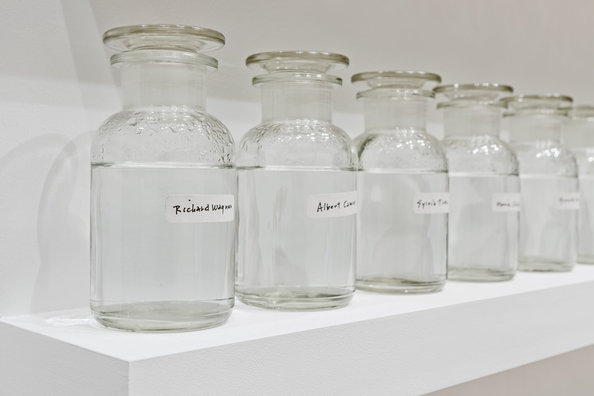
Querverweise
1 Bei Vergil (Publius Vergilius Maro) wird in dem Epos Aeneis ein Teil der Campi Flegrei (Avernischer See) als solcher benannt (29-19 v.u.Z.)
2 Die lokalen Bezeichnungen und Hinweise auf das professionelle Klagen als gegenwärtiges Phänomen sind einem Artikel von Concetta Formissana auf visuviiolive.it entnommen, einer neapolitanischen regionalen Internetzeitung.
https://www.vesuviolive.it/cultura-napoletana/313855-ernesto-de-martino-chiagnazzare/ (zuletzt geöffnet am 20.03.2023)
Quellen
Concetta Formissana (2019): Sulle orme di Ernesto De Martino: l’antico mestiere delle “prefiche”, le “chiagnazzare” napoletane. November 2019. https://www.vesuviolive.it/cultura-napoletana/313855-ernesto-de-martino-chiagnazzare/ (zuletzt geöffnet am 20.03.2023)
Ernesto De Martino (1961): La terra del rimorso. Contributo a una storia religiosa del Sud. Mailand: Il Saggiatore
Ernesto De Martino (2000): Morte e pianto rituale nel mondo antico: dal lamento pagano al pianto di Maria. Erstausgabe 1958. Turin: Bollati Boringhieri
Ernesto De Martino (2002): Sud e magia. Erstausgabe 1959. Mailand: Feltrinelli
Sylvia Wynter (1984): The Ceremony Must Be Found: After Humanism. boundary 2, Vol. 12/13, Vol. 12, no. 3 – Vol. 13, no. 1, On Humanism and the University I: The Discourse of Humanism (Spring – Autumn, 1984), S. 19-70
Sylvia Wynther (2015): The Ceremony Found: towards the autopoetic turn/overturn, its autonomy of Human agency and extraterritoriality of (self-)cognition. In Black Knowledges/ Black Struggles: Essays in Critical Epistemology, (Hg.: Jason Ambroise / Sabine Broeck). Liverpool: University Press.
Anselm Franke, Elisa Guiliano (2022): Ceremony — Burial of an undead world. Ausstellungskatalog zur gleichnamigen Ausstellung HKW (2022), Leipzig: Spector Books
Every month, my body releases two types of fluid: water, which drains from the small holes in the inner corners of my eyes, and blood, which drains from the hole in the corner of my legs.
While the blood is well-known to be scheduled, the other translucent fluid is often underrated, even though it is also part of the plan.
Yes, I’m talking about the emotional upset in the form of tears that women experience every month as part of the PMS (premenstrual syndrome) symptoms. Changes in our hormone levels, especially when the levels of serotonin are low, can lead to feelings of tearfulness, sadness, irritability, sleep issues, and food cravings, all of which are common PMS symptoms.
Even though it is a real thing that happens to around 75% of women, pop culture still loves to use it to stereotype women as being unreasonable and having uncontrollable emotions triggered by raging hormones before or during menstruation.
However, ‘Those Bloody Tears’ are very real and as natural as life itself. The social portrayal of women crying in a negative way doesn’t seem fair. It is because those tears are part of women’s nature and actually indicate a normal healthy body.
I feel blessed that I am able to release my emotions.
I feel grateful that I can embrace my sensitivity and vulnerability.
I feel connected to the complex nature of my body.
I feel privileged to own this crying material as a part of me.
The power of tears cannot be underestimated and every cycle reminds me of the wonderful part of being a bloody healthy woman (period)
Image generated by Midjourney
The term “swallowing one’s tears (back)” is often used to describe someone suppressing their grief or despair, stopping themselves from crying. The expression seems to float somewhere between a figure of speech and a literal description of a physiological process. However, in most dictionaries, no entry can be found.
Here are some examples on possible usecases of this expression (translated from German):
“James de Malplaquet sang to it as if he had to swallow his tears, with a gentle vibrato in his voice, a glass of whisky or red wine in his hand nearly all the time (…) and paid homage to such beautiful despair that one felt the desire to drown oneself in a barrel of ale in the cellar of a British pub that very night.” (Tagesspiegel, Oliver Dietrich, 20.01.2012)
“Sharma apologised before the plenary with his head bowed, paused, had to swallow his tears. Shortly afterwards, the watered-down Glasgow Pact was adopted.” (taz, Susanne Schwarz, 12.12.2022)
“This time, however, Stanisic has to swallow tears for once, which make his voice brittle. ‘That’s how it is when you work with memory,’ he says, ‘eventually it gets you.'” (Süddeutsche Zeitung, Karin Janker, 14.06.2019)
Similar semantic constellations also exist in other languages than just German and English, for example, svälja gråten in Swedish, polykat slzy in Czech, or inghiottire le lacrime in Italian. In other words: We’re probably onto something.
However, in terms of its physiological content, the phenomenon of swallowing tears hardly appears to be a subject of scientific interest. This could indicate that it is actually more of a metaphorical construction than a physiological process. Yet, a brief study of the process of crying itself certainly shows the possibility of a literal interpretation, for tears are formed in the lacrimal glands and then flow through the tear ducts into the nasal cavity. This in turn is connected to the pharynx, so that it is indeed possible to swallow one’s own tears very naturally (alongside the mucus that also forms in the nose when weeping).
That swallowing (back) one’s tears is an actual thing might be also supported by the fact that any advice to stop unwanted crying often mentions intentional swallowing. This is where the proverbial “lump in the throat” comes in. It occurs because emotional crying opens the muscle at the back of the throat, called the glottis. Crying tries to keep the glottis open while swallowing, creating the feeling that a lump is forming in the throat. It is advised to drink a sip of water, swallow empty or yawn, which can help the felt lump, and eventually the crying itself, to go away.
The German speaking internet as well as reddit wonder if it is harmful to swallow one’s own tears, but be reassured: This does not seem to be the case.
Metaphorically, or even poetically speaking, the process of swallowing one’s own tears seems significant in that crying per se seems to perform a movement from the individual’s inside to their outside: emotions and the nervous system produce a fluid that makes its way from the interior to exterior parts of the body, to the visible and thus to the social, when tears run down the cheeks. Swallowing tears reverses this process: The movement into the outside is thwarted and diverted back into the inside, the attempt to make and become visible is prevented and the social potential of crying, the receiving of support and help from others, is made impossible.
But: perhaps you’re just saving them for another day?


digital tears
virtual cry
tears as public consumption
crying as a programmed act
tears as a filter
crying as a mask

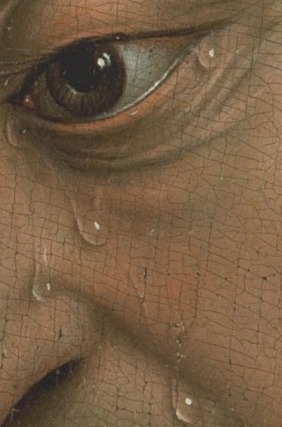

sacred tears
holy cry
tears as a religious experience
crying as a sacrilegious act
tears as a devotion
crying as a ritual



illegal tears
criminal cry
tears as a permanent statement
crying as an act of strength
tears as an offence
crying as a sentence


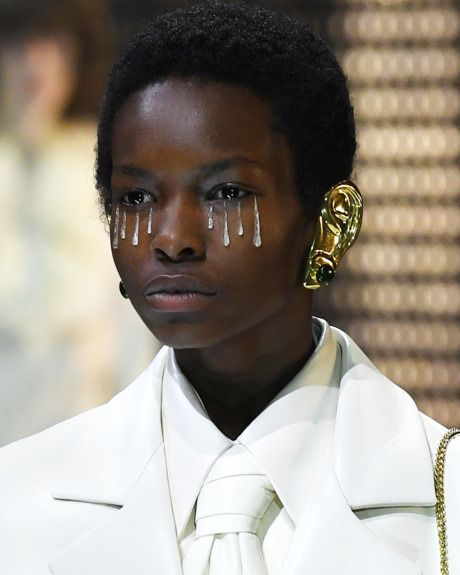
luxury tears
expensive cry
tears as a fashion statement
crying as an act of opulence
tears as a product
crying as a labor